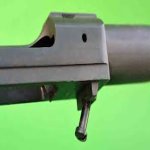Hello,
I've got a Ruger Hawkeye Guide Gun and I'm looking into pillar bedding since I saw some dude from Alaska on YouTube have the laminate stock break on him after a while, and he brought it up as something that would help increase the longevity of the stock among other things. Is this something that you guys would recommend? It seems like people around generally see it as only having upsides, at least when done competently. Also, apparently the M77 action is different in that the front screw is at a 60 degree angle or something, but I don't know if that presents a significant issue. If you do recommend this, do you know how I should go about finding someone who can get this done properly? I've been looking around to the best of my ability and can barely find anything specifically relating to pillar bedding except for 2-3 places in BC and AB (I'm in ON). Should I just go asking around Gunsmithing places near me with decent reviews and asking them or is that a recipe for having my stock busted?
As a side note, it's actually so hard, relatively speaking, to find firearms related things for Canada online; unless I'm just looking in the wrong places. I'm spoiled by search engines.
Thanks a bunch.
I barely know what I'm talking about, so please excuse any cringey assumptions I've made.
I've got a Ruger Hawkeye Guide Gun and I'm looking into pillar bedding since I saw some dude from Alaska on YouTube have the laminate stock break on him after a while, and he brought it up as something that would help increase the longevity of the stock among other things. Is this something that you guys would recommend? It seems like people around generally see it as only having upsides, at least when done competently. Also, apparently the M77 action is different in that the front screw is at a 60 degree angle or something, but I don't know if that presents a significant issue. If you do recommend this, do you know how I should go about finding someone who can get this done properly? I've been looking around to the best of my ability and can barely find anything specifically relating to pillar bedding except for 2-3 places in BC and AB (I'm in ON). Should I just go asking around Gunsmithing places near me with decent reviews and asking them or is that a recipe for having my stock busted?
As a side note, it's actually so hard, relatively speaking, to find firearms related things for Canada online; unless I'm just looking in the wrong places. I'm spoiled by search engines.
Thanks a bunch.
I barely know what I'm talking about, so please excuse any cringey assumptions I've made.








































































